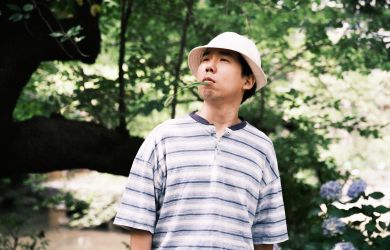
Originally published on metropolis.co.jp on July 2009
I went to a Japanese baseball game last month. Actually, I went to a fight at a Japanese baseball game.
I took my son to see his favorite team, the Seibu Lions, at Seibu Dome in Saitama. My son is only 5 years old, yet he’s already been to ballparks in Japan and North America. He knows what live baseball is all about. But this time, he learned that baseball games in Japan can be dangerous.
We decided to sit in the bleacher seats, thinking it would be fun to be part of an outfield cheering section. I’d read about the spirited antics of Japanese baseball fans, and how they made games more fun than those in North America. I thought the cheering section would be a new experience for my son. It certainly was.
The problems started shortly after our arrival. The Lions’ bleachers were full, so we sat on the other side with fans of that night’s opposition, the Yokohama BayStars. My son likes the Lions, but he wore no Lions colors as we took our seats. He cheered for his favorite players, but his voice was drowned out by four busy buglers in our section. They would have made Metallica proud.
Soon, the cheering started—actually, it was more like chanting. The fans raised their arms and closed their eyes in a mock messianic trance. I felt like I’d walked onto the set of Attack of the Killer Baseball Zombies.
The cheering zombies blocked our view for most of the game. But that wasn’t the worst part. A woman in front of us took over an entire row of benches. She had jerseys, newspapers, jackets and sweaters strewn across the seats. My son made the mistake of stepping onto one of her sweaters. The woman responded by slapping him, right in front of me.
Now, when a stranger hits my kid, I get upset. I confronted the woman and my wife joined in. We yelled and argued. My son cried. Other fans stared. The woman called security. Security officers came and, after listening to both sides, told us all to behave. They asked my wife if she wanted to call the police. We declined. In the end, we all went back to watching the game. However, I was still amazed at what this complete stranger had done.
I’ve been to baseball games in Chicago, Detroit, Cleveland and Los Angeles. I have worn opposing team colors into some of the toughest ballparks in North America. But never in my 30 years of watching baseball have I ever gotten into a fight. And never have I seen an adult hit a child.
Japanese cheering sections are, like many things in Japanese society, exclusive clubs. Outsiders are rarely allowed in. That’s my explanation for what happened to us at the baseball game. Sure, we had tickets that entitled us to sit where we wanted. But the Yokohama fans didn’t want us in their section. I guess they felt they owned that part of the ballpark, and we were uninvited guests.
Author Robert Whiting discusses this phenomenon in his classic book on Japanese baseball, You Gotta Have Wa. Whiting suggests that cheering sections are not merely loose-knit groups of fans getting together for a good time. Rather, they are highly regimented organizations where supporters are told how and when to cheer. The applause is not spontaneous, but scripted, organized and rehearsed. The military-like precision of cheering sections is another example of the powerful group dynamic that rules the majority of Japanese life.
Baseball group-think might seem quaint and charming to some people. But I prefer the spontaneous outpourings of support—or derision—based on individual plays and players. In other words, I want to be free to cheer or boo as I see fit.
In the end, my son stopped crying and watched what he could of the game. Some nice Yokohama fans even entertained him with their cute toys. But I had learned a lesson. Next time, I will buy a more expensive ticket and sit in a real seat. I don’t want to be told how to cheer. And I don’t want anyone hitting my kid.








